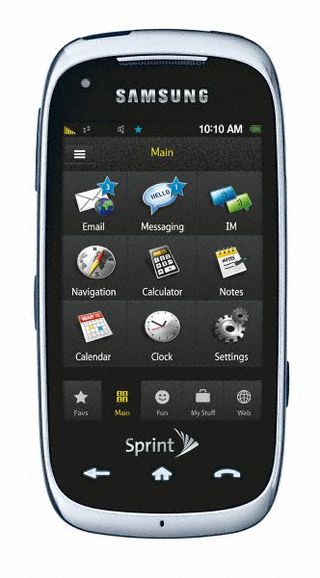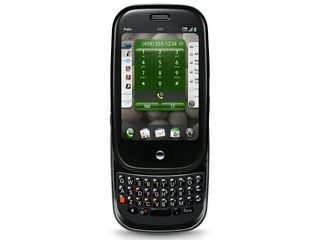10 things Google should change for Nexus 2
Could Google create a better phone? Yes, and here's how
6. Haptics is for newbies
There is a lot of debate about haptics technology, the slight buzzing sensation you feel when you press one of the four hardware buttons on the Nexus One.
Some interface experts say it's a killer feature because it means you don't have to look at the device. On the Nexus One, these buttons are imprecise at best, and unusable at worst (especially if you really do try to press them without looking).

BETTER HAPTICS: Haptics on phones such as the Samsung Instinct HD work much better than they do on the Nexus One, which tends to miss key presses
We're not big fans of the Samsung Instinct HD, which relies too much on haptics. In general, haptics only work if they are implemented extremely well; otherwise, the buzzing is more of a distraction than an aid and mar the overall phone experience.
7. Carrier partnerships
Open handsets are the future – similar to how a PC doesn't need to be locked into one particular operating system (that's a joke). Actually, we know how subsidised phones do help with initial costs, especially in the UK where you are more likely to find a free smartphone on offer than in the US. And yet, the reality in the US (for now) is that the Nexus One really only works with T-Mobile.
Get daily insight, inspiration and deals in your inbox
Get the hottest deals available in your inbox plus news, reviews, opinion, analysis and more from the TechRadar team.
The successor needs to support CDMA and more carriers, but most importantly should be available in multiple versions. The process should work like this: you go to a Google store, select the carrier you want to use, buy the phone that matches that carrier platform, and then arrange a contract on your own terms, at your own price and length.
8. Make a real Android video store
Before Google makes a new Android phone, the company needs to address one glaring issue – the complete lack of a video store. Surprising, because the the wonderful 800x480 resolution, WVGA, AMOLED screen is a stunner – bright, clear, and massive compared to many other smartphones.
Movies would look fantastic, and you can easily load them with your PC. However, Google needs a video store where you can rent and buy Hollywood movies right from the device.
9. Really add 802.11a this time
When we reviewed the Nexus One, we asked about an unusual specification listed at google.com/phone – that the phone supports 802.11a. This is unlikely, we thought, because A is an unusual spec that uses a different channel from B/G.
We wondered about this because A is not that common anymore. (We have noticed the site no longer lists A capability.) And yet, perhaps there is a way to get A to work on a smartphone – Atheros or Broadcom, work your magic!
The more consistent Wi-Fi speeds could mean reliable transmissions and work with dual-band routers. If Google can pack 802.11n (which is still listed as a feature for the Nexus One but is not) into a successor, with 100MBps speeds, we'd be even happier.
10. Fix the USB problem
One last minor issue – the Nexus One forces you to mount the device as a USB drive each time you connect it to your computer. This is just an extra step and no other phone we have tested recently has this limitation.

BETTER USB: When you connect the Palm Pre, you are prompted to connect over USB, charge the device, or just add media files
The successor should work like the Palm Pre or the unmentionable phone: just mount automatically. There is no reason other phones mount automatically and the Nexus requires the mount.
- 1
- 2
Current page: Improve haptics, add a video store and more
Prev Page How Google can fix the NexusJohn Brandon has covered gadgets and cars for the past 12 years having published over 12,000 articles and tested nearly 8,000 products. He's nothing if not prolific. Before starting his writing career, he led an Information Design practice at a large consumer electronics retailer in the US. His hobbies include deep sea exploration, complaining about the weather, and engineering a vast multiverse conspiracy.

